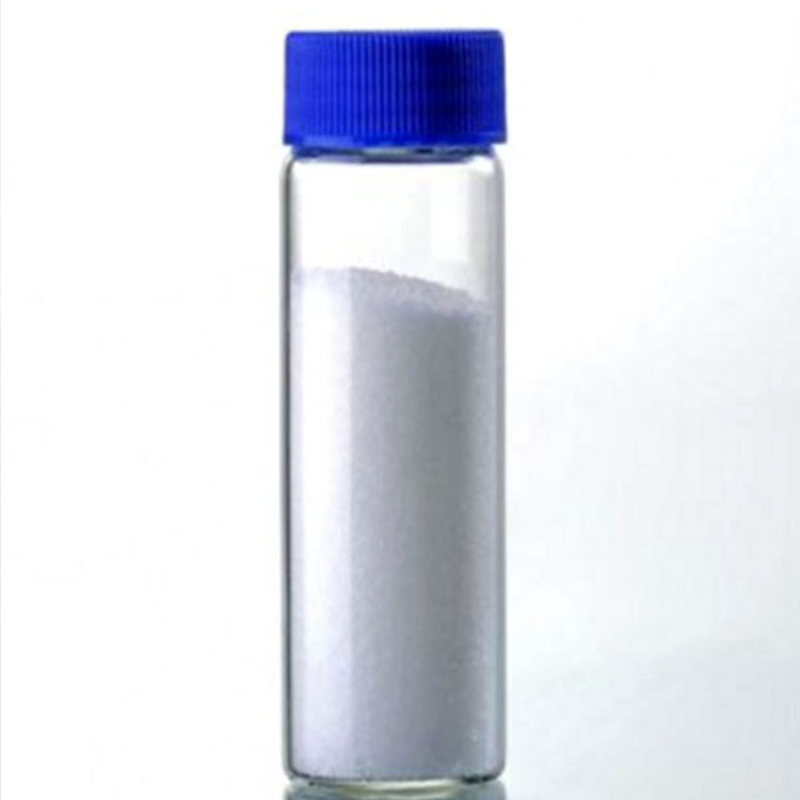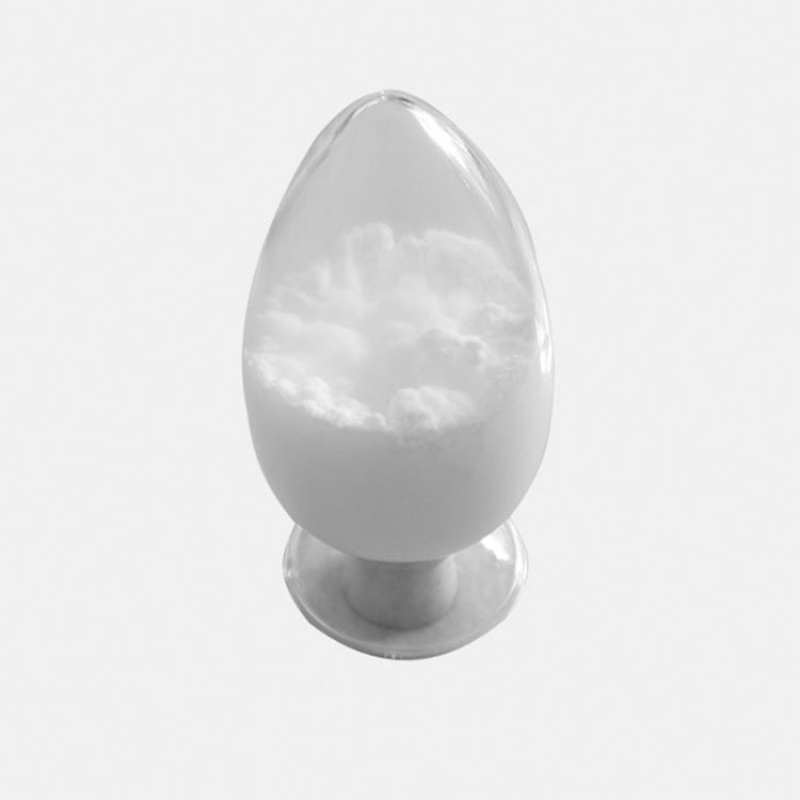Products Description of 1,3-Dichloroisoquinoline CAS#7742-73-61,3-Dichloroisoquinoline is a white to brown crystalline powder.1,3-Dichloroisoquinoline Chemical PropertiesMelting point 121-122 °C (lit.)Boiling point 307°C(lit.)density 1.407±0.06 g/cm3(Predicted)storage temp. Inert atmosphere,Room Temperatureform powder to crystalpka-1.49±0.50(Predicted)color Light yellow to Brown to Dark greenCAS DataBase Reference7742-73-6(CAS DataBase Reference)Safety InformationHazard Codes XiRisk Statements 36/37/38Safety Statements 26-36WGK Germany 3HS
Contact Now
Products Description of 1,3-Propanediol CAS#504-63-21,3-Propanediol (PDO) is mainly used to produce a new type of polyester, polytrimethylene terephthalate (PTT).
Contact Now
Products Description of 1,3-Butanediol CAS#107-88-0Transparent colorless hygroscopic viscous liquid with a weak special taste. Almost odorless. Boiling point 207.5℃, relative density (4:1.0059, refractive index (nD20) 1.4401, freezing point <-50℃, flash point 121.1℃. Has a certain antibacterial effect.
Contact Now
Products Description of ISOQUINOLINE-3-CARBOXYLIC ACID CAS#203626-75-9 Isoquinoline-3-carboxylic acid, monohydrate is an organic compound.Isoquinoline-3-carboxylic acid Chemical PropertiesMelting point 166-168 °C(lit.)storage temp. 2-8°Cform powder to crystalcolor White to Light yellow to Light orangeSafety InformationHazard Codes XiRisk Statements 36/37/38Safety Statements 26-37/39WGK Germany 3Product Application of Isoquinoline-3-carboxylic acidIsoquinoline-3-carboxylic acid, monohydrate is often used as an intermediate.Factory
Contact Now
Products Description of ISOQUINOLINE-5-CARBOXYLIC ACID CAS#27810-64-6ISOQUINOLINE-5-CARBOXYLIC ACID is a chemical.
Contact Now
Products Description of 1,3-Dihydroxyacetone CAS#96-26-4Dihydroxyacetone is a naturally occurring ketose that is biodegradable, edible and non-toxic to the human body and the environment.
Contact Now
Products Description of Dibenzoylmethane CAS#120-46-71,3-diphenyl-1,3-propanedione is commonly known as dibenzoylmethane.
Contact Now
Products Description of 1,3-Dimethylurea CAS#96-31-11,3-Dimethylurea, an organic chemical substance, CAS number: 96-31-1, molecular formula: C3H8N2O.1,3-Dimethylurea Chemical PropertiesMelting point 101-104 °C(lit.)Boiling point 268-270 °C(lit.)density 1.142vapor pressure 6 hPa (115 °C)refractive index 1.4715 (estimate)Fp 157 °Cstorage temp. Store below +30°C.solubility H2O: 0.1 g/mL, clear, colorlesspka14.57±0.46(Predicted)form Crystalscolor WhitePH9.0-9.5 (100g/l, H2O, 20℃)Water Solubility 765 g/L (21.5 ºC)BRN 17
Contact Now
Products Description of (Z)-N-9-octadecenylpropane-1,3-diamineCAS#7173-62-8Colorless liquid(Z)-N-9-octadecenylpropane-1,3-diamine Chemical PropertiesBoiling point 435.6±28.0 °C(Predicted)density 0.851±0.06 g/cm3(Predicted)vapor pressure 0.002Pa at 20℃pka10.67±0.19(Predicted)Water Solubility 36mg/L at 23℃LogP0EPA Substance Registry SystemN-Oleyl-1,3-propanediamine (7173-62-8)Factory and Equipment ShowFast delivery timeInventory 2-3 working days New production 7-10 working days
Contact Now
Products Description of 1,3-Dioxan-2-one CAS#2453-03-4Used to synthesize polytrimethylene carbonate (PTMC)1,3-Dioxan-2-one Chemical PropertiesMelting point 45.0 to 49.0 °CBoiling point 135°C/4mmHg(lit.)density 1.200±0.06 g/cm3(Predicted)storage temp. under inert gas (nitrogen or Argon) at 2-8°Csolubility soluble in Methanolform powder to crystalcolor White to Almost whiteSafety InformationRisk Statements 22-36Safety Statements 24/25HS Code 29147000Factory and Equipment ShowFast delivery timeInventory 2-3 working days New production 7-10 wo
Contact Now
Products Description of ISOQUINOLINE-5-CARBALDEHYDE CAS#80278-67-7ISOQUINOLINE-5-CARBALDEHYDE is a white powder crystal.ISOQUINOLINE-5-CARBALDEHYDE Chemical PropertiesMelting point 116-120 °CBoiling point 331.7±15.0 °C(Predicted)density 1.223±0.06 g/cm3(Predicted)storage temp. Keep in dark place,Sealed in dry,Room Temperatureform powder to crystalpka4.53±0.13(Predicted)color White to Light yellowSensitive Air SensitiveBRN 112875CAS DataBase Reference80278-67-7(CAS DataBase Reference)Safety InformationHazard Codes XnRisk Statements 36/37/38
Contact Now
Products Description of 1,3-Dioxan-2-one homopolymer CAS#31852-84-3Polylactic acid is also known as polyhydroxypropionic acid or polylactide. It is a biodegradable polymer material formed by the polycondensation of lactic acid monomers. It is soluble in solvents such as chloroform, acetone, dioxane, dimethylformamide, benzene, toluene, and insoluble in saturated alkanes such as petroleum ether. It has good biocompatibility and blood compatibility, good anticoagulant properties in vitro, can be degraded by the human body, and excreted from the body as carbon dioxide and water.
Contact Now
Products Description of 2,2-Dimethyl-1,3-dioxolane-4-methanol CAS#100-79-8(+,-)-2,2-Dimethyl-4-hydroxy-1,3-dioxane is a chemical.2,2-Dimethyl-1,3-dioxolane-4-methanol Chemical PropertiesMelting point -27℃Boiling point 189-191 °Cdensity 1.066 g/mL at 20 °C(lit.)vapor pressure 34Pa at 20℃refractive index n20/D 1.434Fp 176 °Fstorage temp. Sealed in dry,2-8°Csolubility 172g/l solubleform Liquidpka14.20±0.10(Predicted)color Clear colorlessPH4.0-7.5 (H2O)Water Solubility miscibleMerck 14,5213Safety Informa
Contact Now
Products Description of Isoquinoline-3-carboxylic acid CAS#6624-49-3Isoquinoline-3-carboxylic acid is a derivative, crystalline solid.Isoquinoline-3-carboxylic acid Chemical PropertiesMelting point 166-167°CBoiling point 366.4±17.0 °C(Predicted)density 1.339±0.06 g/cm3(Predicted)storage temp. 2-8°Csolubility DMF: 20 mg/ml; DMF:PBS(pH 7.2)(1:1): 0.5 mg/ml; DMSO: 20 mg/ml; Ethanol: 5 mg/mlform A crystalline solidpka1.20±0.30(Predicted)CAS DataBase Reference6624-49-3(CAS DataBase Reference)Safety InformationHazard Codes XiRisk Statements 36/37/38-36Saf
Contact Now
Products Description of 1,2,3,4-TETRAHYDROISOQUINOLINE CAS#91-21-4Tetrahydroisoquinoline (TIQ) is an organic compound with the chemical formula C9H11N. It is classified as a secondary amine and is obtained from isoquinoline by hydrogenation.
Contact Now
Products Description of 2-Bromo-2-nitro-1,3-propanediol CAS#52-51-72-Bromo-2-nitro-1,3-propanediol CAS#52-51-7 is an intermediateProduct Parameters of 2-Bromo-2-nitro-1,3-propanediol CAS#52-51-71. Names and IdentifiersName2-Bromo-2-nitro-1,3-propanediolSynonyms 1,3-Propanediol,2-bromo-2-nitro-2-Brom-2-nitropropan-1,3-diol2-Bromo-2-nitro-1,3-propanediol,BNPD,BNPK2-BroMo-2-nitropropane-12-bromo-2-nitropropane-1,3-diol2-Bromo-2-nitropropane-1,3-diol (Bronopol)3-diol(Bronopol)4-01-00-025014-01-00-02501(Beilstein Handbook Reference)b-Bromo-b-nitrotrimethyleneglycolBroken Ba
Contact Now
Products Description of Glycerol formal CAS#4740-78-7Glycerol acetal (GF) is a light glycerol acetal composed of about 60% 5-hydroxy-1,3-dioxane and about 40% 4-hydroxymethyl-1,3-dioxane. Glycerol reacts with formaldehyde in the presence of an acidic catalyst to produce acetone.
Contact Now
Products Description of 1,3-bis(3-glycidoxypropyl)tetramethyldisiloxane CAS#126-80-7Colorless liquid1,3-bis(3-glycidoxypropyl)tetramethyldisiloxane Chemical PropertiesMelting point <0°CBoiling point 184 °C2 mm Hg(lit.)density 0.996 g/mL at 20 °C(lit.)refractive index n20/D 1.452Fp 110°CSpecific Gravity0.996Hydrolytic Sensitivity3: reacts with aqueous baseBRN 223966InChIInChI=1S/C16H34O5Si2/c1-22(2,9-5-7-17-11-15-13-19-15)21-23(3,4)10-6-8-18-12-16-14-20-16/h15-16H,5-14H2,1-4H3InChIKeyMFIBZDZRPYQXOM-UHFFFAOYSA-NSMILES[Si](C)(C)(
Contact Now
Products Description of 7-Bromoisoquinoline CAS#58794-09-5Quinoline and isoquinoline are important components of antibacterial drugs.
Contact Now
Products Description of Dimethyl-Amino Propyl-Amine CAS#109-55-7N,N-dimethyl-1,3-diaminopropane is an organic compound with the molecular formula C₅H₁₄N₂3-Dimethylaminopropylamine Chemical PropertiesMelting point -60 °CBoiling point 133 °C(lit.)density 0.812 g/mL at 25 °C(lit.)vapor density 3.6 (vs air)vapor pressure 5 mm Hg ( 20 °C)refractive index n20/D 1.435(lit.)Fp 90 °Fstorage temp. Store below +30°C.form Liquidpka10.13±0.10(Predicted)color ClearOdorammoniacal odorPH12.7 (100g/l, H2O, 20℃)explosive limit2
Contact Now
Products Description of DMI CAS#80-73-91,3-dimethyl-2-imidazolinone, also known as dimethylethylene urea, referred to as 1,3-dimethyl-2-imidazolinone, is a polar solvent with a high boiling point, Chemicalbook, It has high flash point, low melting point, extremely low toxicity, extremely low pollution and strong solubility.
Contact Now
Products Description of Pyromellitic Dianhydride CAS#89-32-7The English name of pyromellitic dianhydride is Pyromellitic Dianhydride (abbreviated as PMDA, the same below), which is mainly used to synthesize polyimide.
Contact Now
Epichlorohydrin CAS# 106-89-8Epichlorohydrin is a sort of organochlorine compound as properly as epoxide. It can be used as an industrial solvent. It is a exceptionally reactive compound, and can be used for the manufacturing of glycerol, plastics, epoxy glues and resins, and elastomers. It can additionally be used for the manufacturing of glycidyl nitrate and alkali chloride, used as the solvent of cellulose, resins, and paint as properly as being used as an insect fumigant.
Contact Now
Products Description of Thyroid powder CAS#50809-32-0In the early days, L-thyroxine was extracted from animal thyroid glands, but the resulting product had low purity, poor optical purity, and its production was limited by the source of animal thyroid glands. Now, chemical synthesis methods are mainly used.
Contact Now































